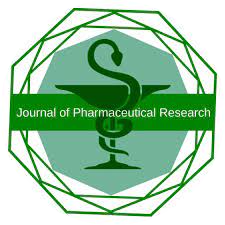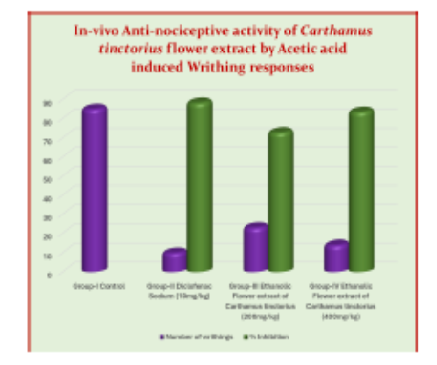


Journal of Pharmaceutical Research
Year: 2025, Volume: 24, Issue: 1, Pages: 49–53
Original Article
K Gnaneswari1,∗, S Thirumala Devi1, G Sai Sandhya1
1Assistant Professor, Department of Pharmacology, Aditya College of Pharmacy, Surampalem, Andhra Pradesh, India
*Corresponding Author
Email: sweetygnanu1@gmail.com
Carthamus tinctorius commonly known as Safflower, has been used as a folkloric medicine in the Ayurvedic system for its various therapeutic properties. The researchers have made a sincere attempt to evaluate the biological effects of the medicinal plant in the treatment of pain, inflammation and pyrexia indicating it as a promising candidate. The ethanolic flower extract of Carthamus tinctorius was subjected to Fourier Transform Infrared Spectroscopy (FTIR) studies to establish the role of possible phytoconstituents responsible for these activities. For the evaluation of therapeutic properties different methods like Anti-nociceptive activity using the standard Acetic acid induced writing response test in mice, anti-inflammatory activity in rats adapting Carrageenan induced paw edema and anti-pyretic activity by inducing suspension of Brewer’s yeast were analyzed. The medicinal plant has acquired lot of prominence for its effective usefulness for various ailments used by local natives as a folkloric medicine. As no scientific studies or research has been published on pyrexia and inflammation by Carthamus tinctorius hence, a sincere attempt is made to explore the possible therapeutic activity of this medicinal plant.
Keywords: Carthamus tinctorius; Anti-nociceptive; Anti-inflammatory; Anti-pyretic; Fourier Transform Infrared Spectroscopy (FTIR)
© 2024 Published by Krupanidhi College of Pharmacy. This is an open-access article under the CC BY-NC-ND license (https://creativecommons.org/licenses/by-nc-nd/4.0/)
Subscribe now for latest articles and news.